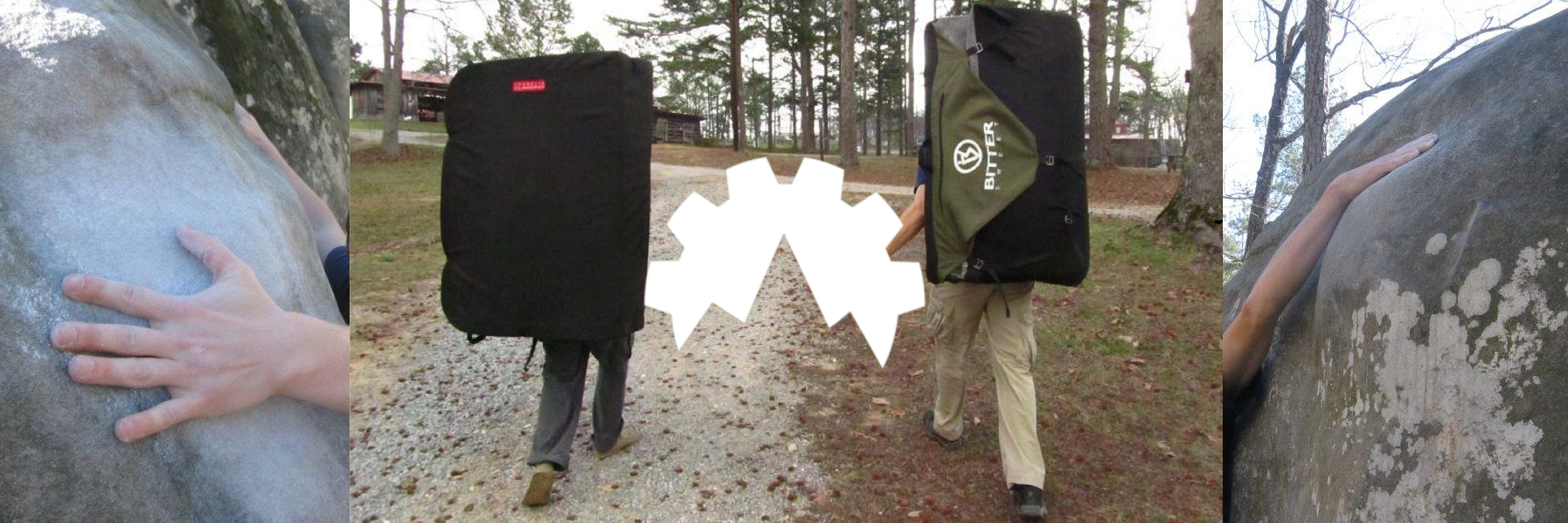I’ve had a lot of hangboards over the years, some because I want to get stronger, some because they look neat, some because I got a good deal. I’ll soon have space to try them all out, and will probably build a cleat system to hot-swap them on the fly. As I add more to the rotation, I’ll add reviews here.
Lets begin with one of my most recent acquisitions – the Trango Rock Prodigy Forge. I wanted to get into something more technical, more systematic this season, so I’m switching over to the Anderson Brothers hangboard protocol. With this set-up, you do a handful of dead hang reps with short rests between, two sets of those per hold, and as many rounds as you have holds you want to train. This protocol also has you add or subtract weight as needed to make sure everything is near maximal.
So why this board with that plan? Well, the Anderson Bros helped design the original Rock Prodigy, so its fitting. It’s less art, and more science with these guys, and I love science. I saw the Forge on the market, saw a good deal on one (shout out to BackCountry for their deals and customer support), and couldn’t help myself… although that may have been a mistake.
Lets talk about what this board does well. It has the pinchiest pinches of any board I have ever used, hands down. Most other boards have awkward pinches hung off the bottom but still very flush to the board, making them more angled-compression-edges. Not this thing – this puppy, if you’re thumb isn’t working, you’re still on the ground. Add to that it has three difference widths to challenge you. It also brings something to the table that I haven’t seen since the original ETCH Headboard – a teeny tiny edge for closed crimping. I know a lot of you just shuddered in horror, but unlike other boards, Trango added an angled ledge just inside each, allowing a place to rest your thumb – pretty neat piece of kit. The board also features a continuous tapered edge that gets deeper as you go. At first blush I found this less scientific – how are you ever going to get in the same spot session after session? That was answered as soon as I chalked up and groped around, finding two tiny “indexing” bumps hidden on the back wall of the slot. With these, you can easily find the sweet spot over and over. Texture on this board is finer than the original Prodigy, but a little bit of chalk makes it just right, and if you keep it brushed it stays sticky.
Trango also brought back the things that made the original Rock Prodigy great. The first is the two piece modular design, allowing the user to set it to their shoulder width; many other boards stack holds near the middle and they become less usable. The other is the multi-depth pockets. The three-finger pocket has progressively deeper dishes, allowing the Wolfgangs amongst us to really focus in on that mono training, and the rest of us to more comfortably train index+middle stacks without having to contort our elbows.
Now for the negatives, and I’ll start at the top, the biggest negative I have with this board is that I am functionally illiterate. Trango tells the user that all of the geometry is different from the original, and it “adds new dimension of difficulty and ergonomics”. I thought this was just sales fluff until I tried to hang from it. The pinches are steeper, the crimps are smaller, the slopers are slopier. While I knew the protocol was designed to add and remove weight via pulleys, I wasn’t expecting to have to subtract up to a third of my bodyweight to complete some of the sets for the holds I chose! Make no mistake, this rig may look petite, but its for the big boys (and girls). A few weeks in and I can hang from the most generous holds with a little weight added here and there, but some holds still require big subtractions. In the interest of saving space, and because you should be warming up thoroughly before hangboarding (I am guilty of not doing this, ever), there’s nothing on this board that resembles a jug, or even an incut. The only actual negative about this board that I can attribute to the design is the steep sloper. Its super shallow, super steep, and its location on the board means its “shadowed” by the pinches in such a way that I can’t comfortably use it even if I had the mettle to hang from it.
Final consensus? If you’re trying the break through on seriously hard projects with tiny holds, one of the elite climbers, or enjoy hoisting large masses into your counterweight system, this board could be for you. For the rest of us mere mortals, I’d highly recommend ponying up the extra few bills for the original Rock Prodigy – its more beginner friendly, its got more holds, and I think you’ll get more mileage out of it.


